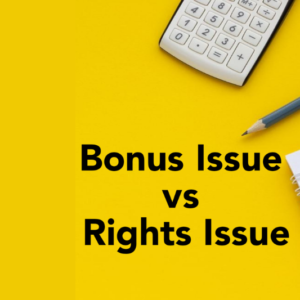In India’s ever-evolving financial environment, commodity investments have emerged as an appealing alternative to traditional options like equities and bonds. Commodities such as agricultural products, precious metals, and energy resources offer distinct advantages, including portfolio diversification and inflation protection. Unlike stocks or bonds, commodities often have a low correlation with other asset classes, which can reduce overall portfolio risk. For instance, during inflationary periods, tangible assets like gold and agricultural commodities typically retain value or appreciate.
However, investing in commodities requires a nuanced understanding of market dynamics, including supply-demand factors, price volatility, and global economic trends. Success in this field necessitates a strategic approach, including thorough research, diversification across various commodities, and effective risk management. By adopting these practices, investors can tap into the significant growth potential of commodity markets and better position themselves to achieve favorable returns.
The Appeal of Commodity Investments
Diversification: Commodities provide a unique advantage in investment portfolios due to their low correlation with traditional asset classes like equities and bonds. This low correlation helps mitigate risks associated with market fluctuations. For instance, data from the National Securities Depository Limited (NSDL) shows that over the past decade, the correlation between Indian commodity indices and the S&P BSE 500 index has varied from -0.3 to 0.1. Such a weak correlation suggests that commodities do not move in tandem with traditional stock indices, thus offering a valuable hedge against market volatility and contributing to overall portfolio resilience.
Inflation Protection: Commodities are often seen as a hedge against inflation, as their tangible nature allows them to retain or increase in value during periods of rising prices. Historical data from the Reserve Bank of India (RBI) indicates that gold, a major commodity, has shown a positive correlation with inflation, with an average correlation coefficient of 0.5 from 1997 to 2022. This means that as inflation rises, the value of gold typically increases, which helps protect investors’ purchasing power and maintain the real value of their investments.
Global Market Exposure: Investing in commodities also provides exposure to global economic trends and international supply-demand dynamics. For example, the price of crude oil, a critical energy commodity, is heavily influenced by global economic growth and geopolitical factors. Changes in the global economy or political events can cause significant fluctuations in oil prices, offering investors the chance to benefit from or hedge against these global influences. This exposure to international markets can enhance investment opportunities and provide a broader perspective on economic conditions worldwide.
Exploring the Indian Commodity Market
The Indian commodity market offers a diverse array of assets, each with its own unique characteristics and investment potential:
- Agricultural Commodities: India leads globally in rice, wheat, sugar, cotton, and spices. These commodities offer investment opportunities due to their demand-supply dynamics and weather sensitivity.
- Precious Metals: Gold, silver, and platinum are safe havens during economic uncertainty. Their intrinsic value and global demand make them appealing to Indian investors.
- Base Metals: Copper, aluminum, zinc, and lead are vital for infrastructure and industrial processes. Their demand is tied to economic growth and urbanization, making them strong investment choices.
- Energy Commodities: Crude oil, natural gas, and coal are essential energy sources that drive global economic activity. Their prices are influenced by geopolitical factors and global demand trends.
Statistical Analysis of Commodity Performance
The Indian commodity market has experienced impressive growth in recent years, significantly outpacing traditional asset classes such as equities and bonds. A prime example of this growth is the performance of precious metals. Gold, a traditional safe haven asset, has seen its prices soar over 200% over the past decade, reflecting increased investor interest and demand during periods of economic uncertainty. Similarly, silver prices have more than doubled, further highlighting the strong market performance of precious metals.
The agricultural sector in India has also seen notable price appreciation. Commodities like rice and wheat have experienced substantial increases in value, showcasing the sector’s resilience amidst varying economic conditions. This growth is indicative of the agricultural sector’s ability to adapt and thrive, contributing positively to the overall economy.
Furthermore, a World Bank report emphasizes the growing global demand for Indian agricultural products, projecting that India’s agricultural commodity exports will reach $60 billion by 2025. This projection underscores the expanding international market for Indian agricultural goods, reflecting the sector’s increasing global significance and potential for future growth.
Effective Commodity Investment Strategies
To effectively manage the complexities of commodity investments in India, investors should take a strategic approach:
- Thorough Research: Perform comprehensive research on the commodities you plan to invest in, including supply-demand dynamics, price history, and global market trends. Use resources from the Multi Commodity Exchange (MCX), National Commodity and Derivatives Exchange (NCDEX), and other exchanges for insights.
- Diversification: Mitigate risk by investing across various commodities—agricultural, precious metals, base metals, and energy—potentially capturing opportunities in different sectors.
- Risk Management: Implement risk management techniques like hedging and stop-loss orders to safeguard your portfolio against unfavorable price movements.
- Professional Guidance: Consult with experienced financial advisors or commodity specialists to develop an investment strategy that matches your risk tolerance and financial objectives.
In conclusion, while commodity investments in India can indeed present a complex landscape with numerous variables, a strategic approach can lead to rewarding opportunities. Conducting thorough research into the commodities you’re interested in—understanding their supply-demand dynamics, historical performance, and global market trends—is crucial. By diversifying your investments across different commodity sectors—such as agricultural, precious metals, base metals, and energy—you can manage risk and take advantage of various market conditions. Additionally, implementing effective risk management strategies, such as hedging and using stop-loss orders, can help protect your portfolio from unexpected price fluctuations. Seeking guidance from experienced financial advisors or commodity experts can further enhance your investment strategy, ensuring it aligns with your financial goals and risk tolerance. By combining these elements, you can navigate the complexities of the Indian commodity market and unlock its substantial potential for well-informed investors. Happy investing!







